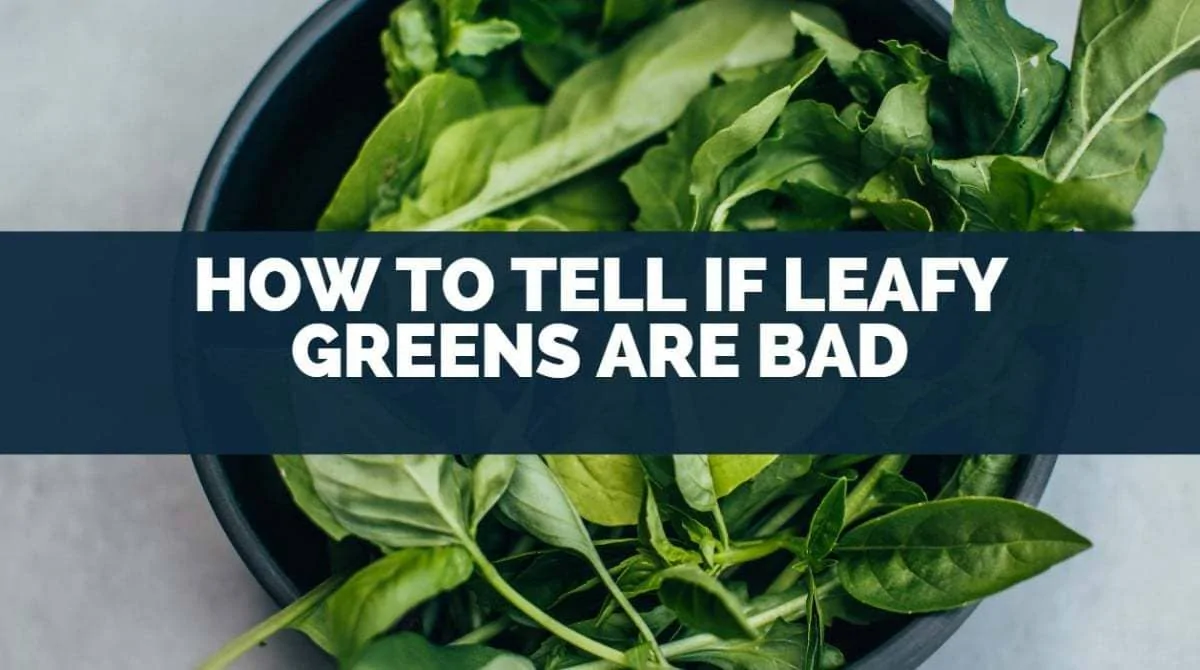
Leafy green vegetables are an important component of a clean and healthy diet.
Greens provide a wide range of beneficial nutrients and are delicious when fresh.
Sometimes, however, they are kept too long and begin to expire, so how do you tell if leafy greens are bad?
To tell if leafy greens are bad, perform a visual inspection. If they have become discolored, slimy, or have a bad odor, these are signs that they have begun to go bad.
To eliminate E. coli, listeria, and other harmful bacteria, wash your leafy greens with vinegar and cook them at 165°F (74°C).
This article will be going over everything you need to know to identify the signs of bad leafy greens.
We will also go over the safest greens to eat and why these particular vegetables are preferable.
Lastly, we will provide you with a how-to on removing harmful bodies, such as listeria, E. Coli, and general bacteria from your greens, so keep reading.
Table of Contents
The Signs of Bad Leafy Greens: What To Look For
When it comes to identifying the signs of leafy greens, your judgment and intuition will play a vital role.
In instances where vegetables have gone completely bad, it will be made obvious by visual signs and smells.
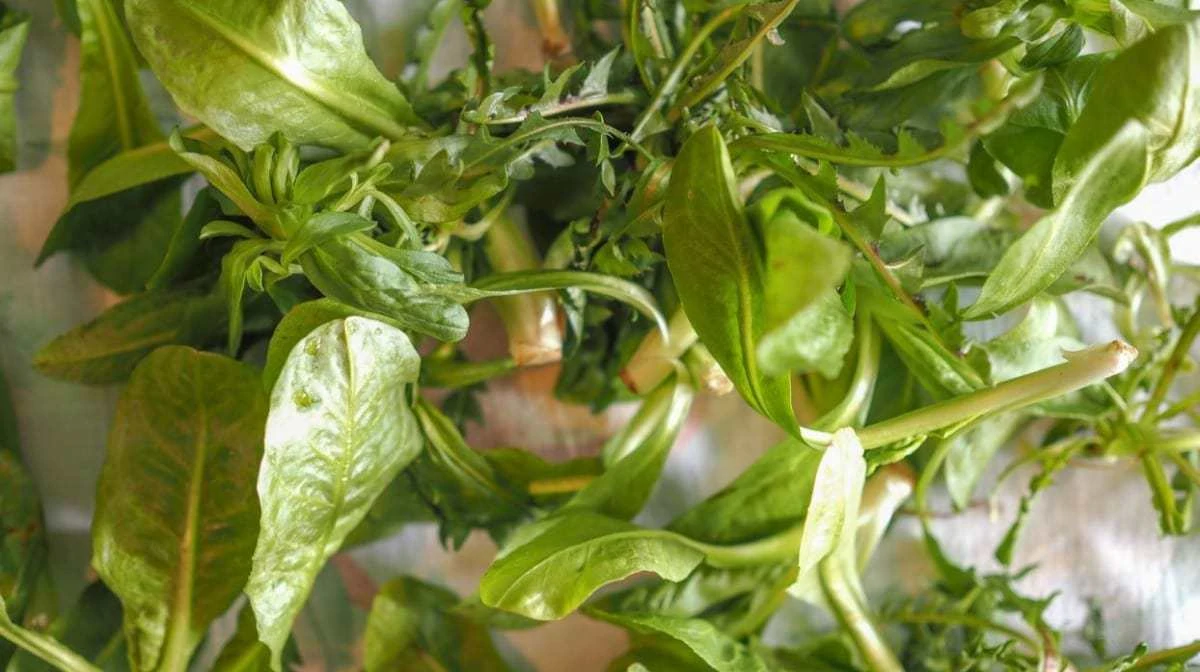
The most common indicators of bad leafy greens are:
- Discoloration (yellow will indicate early stage, black/brown later stage)
- Offense and pungent odors
- Slimy and mushy texture
Sometimes vegetables may be salvageable, despite the early onset of perishment, if the bad parts can be cut off and removed and the good parts preserved.
Always remove bruised or discolored sections of vegetables and never ingest them as these can be harmful.
What Are the Safest Leafy Greens To Eat?
Throughout the process of growing, processing, transporting, and storing vegetables, there are many ways that they may become contaminated with harmful bacteria, like E. Coli, listeria, and salmonella.
Some leafy greens are safer than others, as they are less prone to accrue bacteria due to their size, shape, and the way they are grown.
The safest leafy greens to eat are organic greens.
According to the World Health Organization, although certain low levels of pesticide will not cause direct harm, food production chemicals are, in general, not good for people. For this reason, organic greens tend to be safer for consumption.
However, with that being said, consuming exclusively organic vegetables will not automatically preclude you from the risk of contracting harmful bacteria by other means besides pesticide contamination.
Another one of the safer leaf greens to eat is a full head of lettuce.
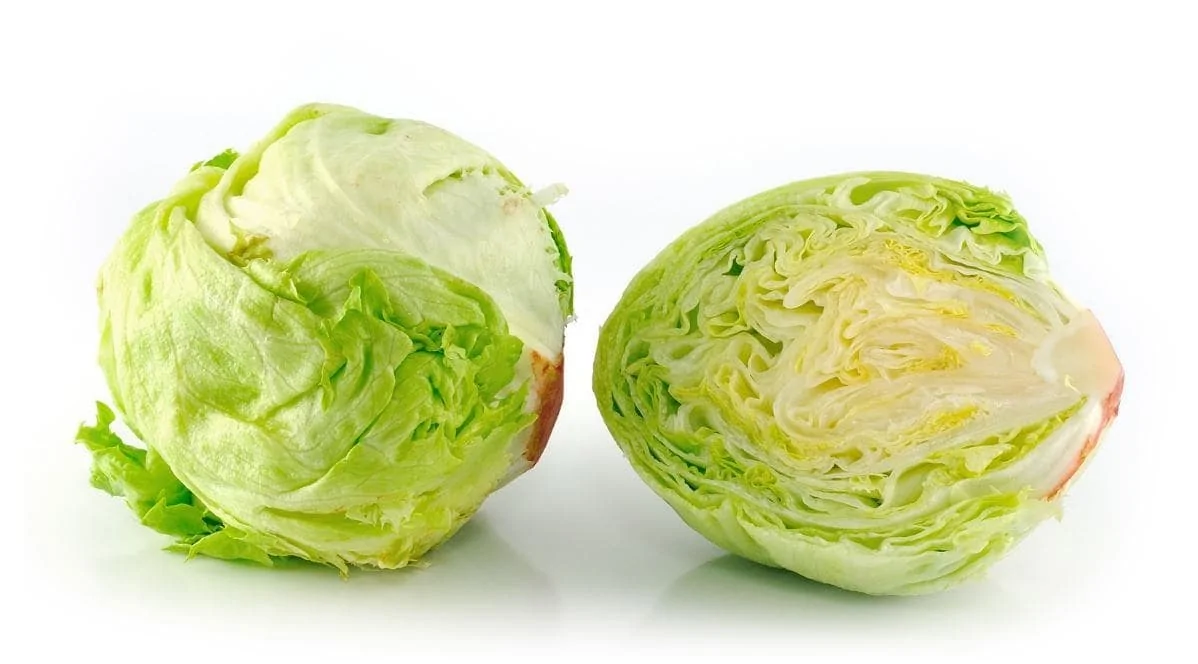
The reason why full, dense heads of lettuce tend to protect themselves better is that bacteria have difficulty penetrating deep into the head and contaminating it.
When preparing a lettuce head, remove the outermost layers and discard them, as they are the most susceptible to bacteria.
Lastly, purchasing your leafy greens directly from farmer’s markets and first sources will be a safer bet.
The reason for this is that you avoid vegetables that have been transported. According to the Centre for Disease Control’s (CDC) food safety guide regarding leafy greens, the transportation stage can lead to contamination of vegetables.
By purchasing directly from farmers, you eliminate this stage and reduce the chance of bacterial exposure.
Leafy greens that come in packaged, assorted bags are prone to contamination because they will come from multiple sources.
If one source is contaminated, it will contaminate the entire bag.
How To Remove Listeria From Leafy Greens
Listeria is a form of bacteria that clings to and lives on different types of food, especially meat and dairy products.
However, fruits, vegetables, and leafy greens, in particular, are not immune to listeria contamination.
Listeriosis is most common among women who are pregnant and those who are over the age of 65.
According to the CDC, each year, of the roughly 1,600 confirmed cases of listeriosis, approximately 260 results in death.
Because of the warm moist conditions they require to be grown in, raw sprouts are highly susceptible to listeria contamination.
To remove listeria from leafy greens, thoroughly cook your leafy greens before eating.

Provided the temperature reaches 165°F (74°C), this will be sufficient to kill any listeria contamination that may be present in your leafy greens.
You must ensure your cooking temperature has reached 165°F, and it’s best to use a cooking thermometer.
If you do not own a food thermometer and would like to purchase a reputable and reliable one at a low price, the ThermoPro TP-02S will be sure to get the job done.
Note that washing alone will not remove listeria.
It is always better to cook leafy greens as opposed to eating them raw and always follow food safety guidelines, and practice proper sanitary practices when handling food.
Doing so will help to avoid food poisoning and keep you and those around you safe and healthy.
Does Vinegar Kill Bacteria on Fruits and Vegetables?
White vinegar is acidic and has often been used by many as a general household cleaning agent for countertops, windows, sinks, etc.
This leads us to the question, does vinegar kill bacteria on fruits and vegetables?
Vinegar kills bacteria on fruits and vegetables.
A study by the Nakano Central Research Institute showed that vinegar had a bactericidal (the capability of killing bacteria) effect on foodborne bacteria, such as E Coli, and is very effective for reducing the chance of getting food poisoning.
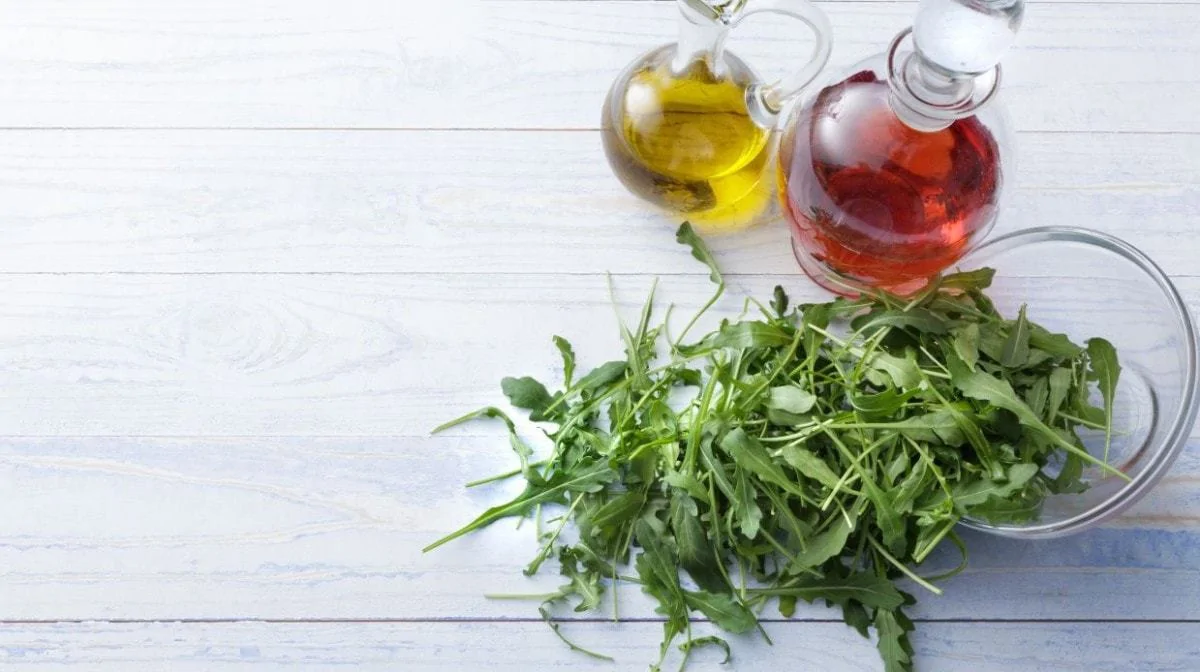
Not only will vinegar kill bacteria on fruits and vegetables, but it will also inhibit the formation of bacteria.
Thus, a vinegar wash will also act as a preventative measure against future contamination.
Because vinegar has a very strong taste, you will want to remove it from your fruit or vegetables before consuming them.
To do this, simply run them under cold water to neutralize the vinegar and remove its taste.
Always wash the vinegar off your hands and skin as soon as possible, as extended periods of contact may lead to skin irritation.
How To Remove E. Coli From Lettuce
Ecoli is a specific type of bacteria that lives in the intestines, and unlike listeria, can not live on surfaces but only on food.
It can spread and propagate rapidly on food products, and as a result, it has led to major, widespread product recalls in the past.
According to statistics from the North Carolina Department of Health & Human Services, around 265,000 cases of E Coli infections are reported annually across the United States, 100 of which lead to complications resulting in death.
While not all forms of E. Coli are harmful, many are. Always take the necessary precautions to avoid the risk.
These are the most common symptoms of an E. Coli infection:
- Dehydration
- Stomach pains and aches
- Excessive fatigue
- Nausea
- Diarrhea
- Fever
If you suspect that you or someone you know has contracted an E. Coli infection, consult a doctor immediately.
E. Coli can take up to three or four days to appear in a person’s system, making it difficult at times to remember when or from what you may have contracted the illness.
As briefly discussed in the previous section of this article, there are, thankfully, ways of removing E. Coli from leafy greens.
If followed, these steps will help keep you safe from harmful bacteria that can result in illness.
Here are the steps to remove E. Coli from lettuce:
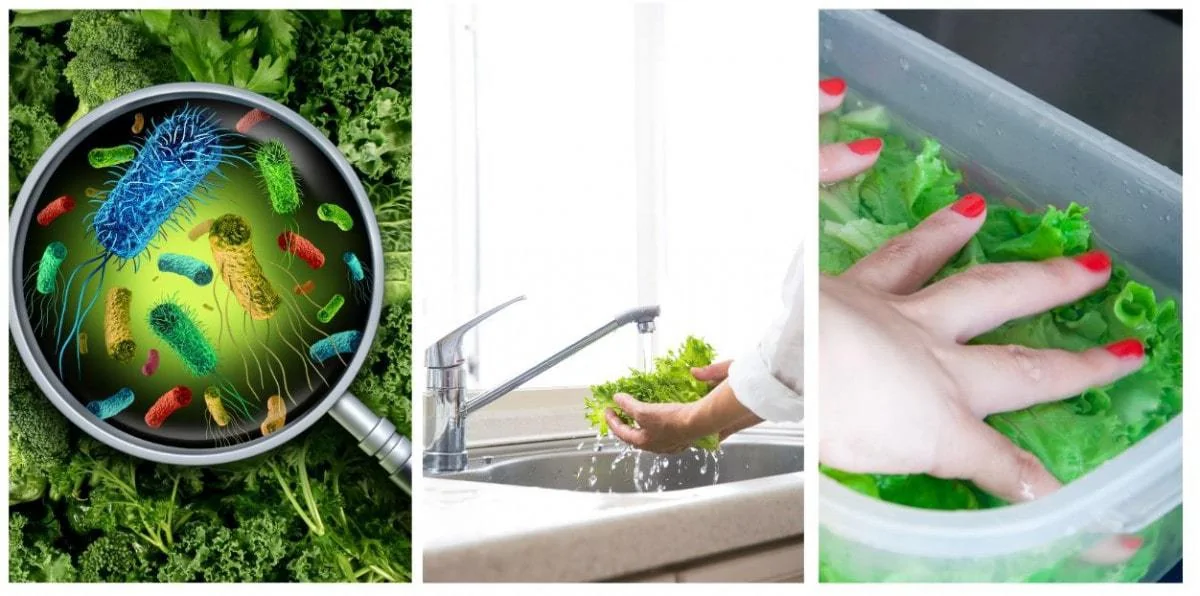
- Start by thoroughly washing your hands with soap in warm water for a minimum of 30 seconds.
- Completely remove all discolored parts or sections of the lettuce that are showing signs of rot or decomposition and discard them.
- Compromised sections of leafy greens make it easier for E Coli to penetrate the plant’s fibers.
- Remove the outermost leaves or layers if possible.
- In a bowl, prepare a solution of 1 part white vinegar to 3 parts water.
- Place your lettuce in the solution and massage it gently with your hands for between 5 and 10 minutes.
- Once finished, remove the lettuce and wash it under cold water.
- This will remove the vinegar and finalize the cleaning process.
Always remember to cook your vegetables at 165°F to further kill bacteria.
The temperature must be sufficiently hot enough to completely kill the entirety of the E. Coli.
Otherwise, E. Coli has the potential to evolve and adapt and become even more resilient.
One study conducted by The U.S. Department of Agriculture studied the effect of cooking E. Coli contaminated gravy at 115°F (46.1°C) was not enough to kill the bacteria but stimulated it and made it more advanced and tolerant of heat.
The same study also suggests that a slow increase in temperature may also allow E. Coli to become adapted and more resilient to heat.
For this reason, it is essential that you keep your leafy greens refrigerated when storing, and cook them immediately and carefully immediately before consuming them.
Conclusion
In this article, we sought to answer the question: how to tell if leafy greens are bad?
Based on the research, we were able to conclude that the best way to tell if leafy greens have gone bad is to simply inspect them for foul odors, discoloration, and a slimy texture.
To be safe, store your leafy greens in a refrigerator.
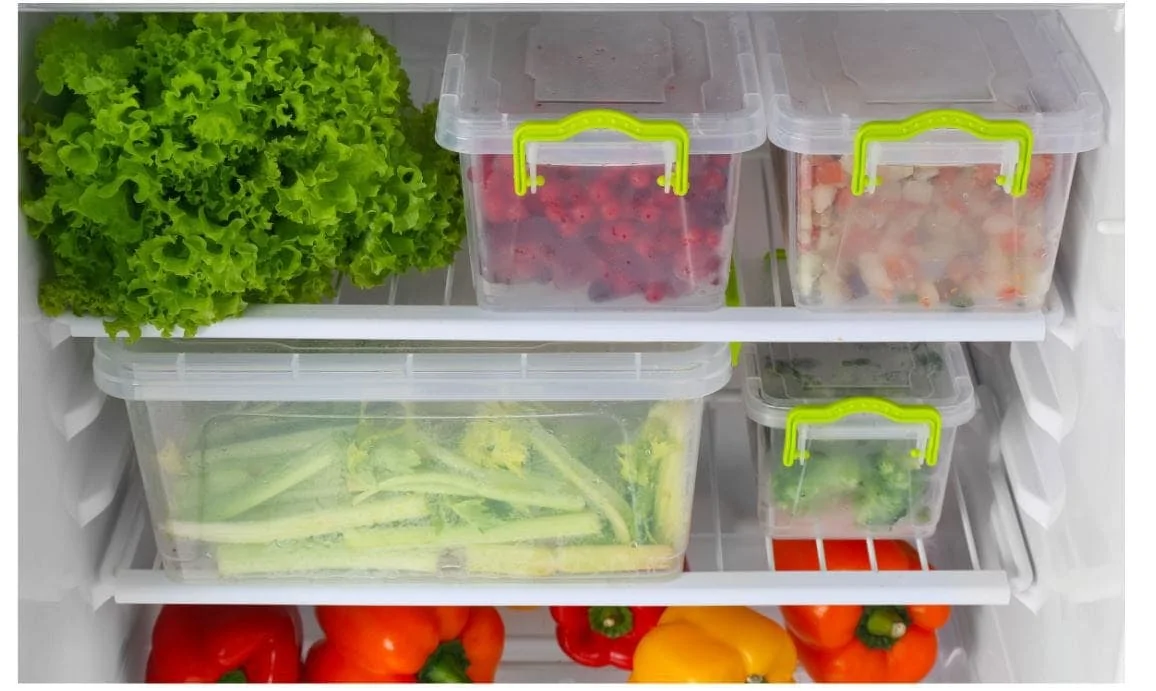
Before eating, remove all bad sections, rinse them in a vinegar solution with one part vinegar for every three parts of water for 10 minutes, and then cook them at 165°F to kill remaining bacteria.
If in doubt throw them out!

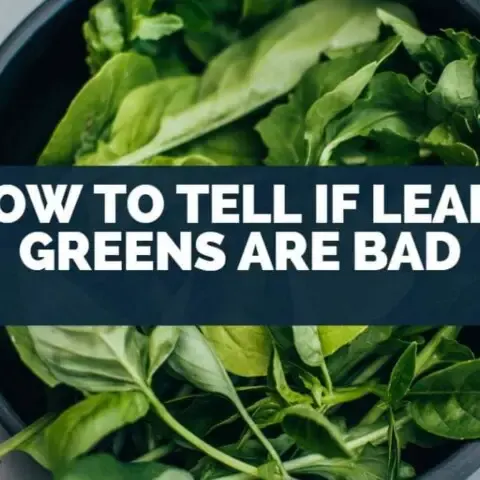
Leave a comment